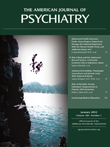Response to Blier Letter
To the Editor: Dr. Blier raises two important issues in response to our findings from the Combining Medications to Enhance Depression Outcomes (CO-MED) study: the lack of a double-blind structure and the dosing of antidepressants. We are unable to confirm whether the presence of a double-blind structure would have allowed us to achieve a much higher dosage for the antidepressants, but the indirect evidence from the higher adverse events in the two combination arms suggests that higher doses would have increased dropout rates in these two groups. It is conceivable that significantly higher doses of individual antidepressants could increase the rates of remission; however, some major issues need to be considered.
First, there are distinct differences in the treatment settings and participant population for the CO-MED study when comparing the results with Blier et al. (1); the CO-MED study was conducted in real-world primary and specialty care settings with minimal exclusion criteria (Tables 2 and 3 in our article [2]). For example, over 75% of the population had anxious depression, and unlike the Blier sample, which recruited around 75% with melancholic subtype of major depression disorder, less than 25% of CO-MED patients met criteria for the melancholic subtype. Furthermore, over 75% of CO-MED participants had at least one comorbid axis III disorder. Second, in the two combination arms of our study, a much higher rate of maximum side-effect burden (statistically higher for venlafaxine plus mirtazapine) was used when compared with monotherapy. Third, the daily doses of escitalopram, while slightly lower for those patients taking it in combination with bupropion (14.0 mg [SD=7.2] for single-blind escitalopram compared with 17.6 mg [SD=4.5] in the monotherapy arm), were not drastically different. Finally, while it is true that the Blier et al. study achieved slightly higher doses of mirtaza-pine and venlafaxine, the daily dose of fluoxetine was only 20 mg. The major difference in these findings stems from the fact that remission rates in the fluoxetine arm of the Blier et al. study were significantly lower (25%) relative to the sustained remission rates in the escitalopram monotherapy arm of the CO-MED trial (38.5%). In fact, Fava et al. (3, 4) have shown that increasing the daily dose of fluoxetine from 20 mg to 40–60 mg for partial responders or nonresponders further enhances response rates, indicating that the dosage of fluoxetine monotherapy in the Blier et al. study may have been suboptimal. In summary, while much higher daily doses of venlafaxine and mirtazapine may be theoretically interesting, it is difficult to argue in favor of its clinical utility in real-world clinical populations.
1. : Combination of antidepressant medications from treatment initiation for major depressive disorder: a double-blind randomized study. Am J Psychiatry 2010; 167:281–288Link, Google Scholar
2. : Combining Medications to Enhance Depression Outcomes (CO-MED): acute and long-term outcomes of a single-blind randomized study. Am J Psychiatry 2011; 168:689–701Link, Google Scholar
3. : Double-blind study of high-dose fluoxetine versus lithium or desipramine augmentation of fluoxetine in partial responders and nonresponders to fluoxetine. J Clin Psychopharmacol 2002; 22:379–387Crossref, Medline, Google Scholar
4. : Lithium and tricyclic augmentation of fluoxetine treatment for resistant major depression: a double-blind, controlled study. Am J Psychiatry 1994; 151:1372–1374Link, Google Scholar



